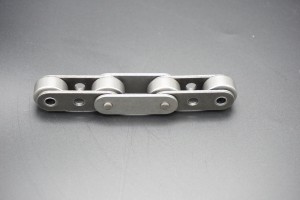1. Measure the pitch of the chain and the distance between the two pins;
2. The width of the inner section, this part is related to the thickness of the sprocket;
3. The thickness of the chain plate to know whether it is a reinforced type;
4. The outer diameter of the roller, some conveyor chains use large rollers.
Generally speaking, the model of the chain can be analyzed based on the above four data. There are two types of chains: A series and B series, with the same pitch and different outer diameters of rollers.
Chains are generally metal links or rings, mostly used for mechanical transmission and traction. Chains used to obstruct traffic passages (such as in streets, at the entrance to rivers or harbors), and chains used for mechanical transmission.
1. The chain includes four series:
Transmission chain, conveyor chain, drag chain, special professional chain
2. A series of links or rings, often metal
Chains used to obstruct traffic passages (e.g. in streets, at the entrance to rivers or harbours);
Chains for mechanical transmission;
Chains can be divided into short-pitch precision roller chains, short-pitch precision roller chains, curved plate roller chains for heavy-duty transmission, chains for cement machinery, and plate chains;
High-strength chain high-strength chain rigging series, professionally used in engineering supporting, manufacturing supporting, production line supporting and special environment supporting.
Post time: Jan-15-2024

